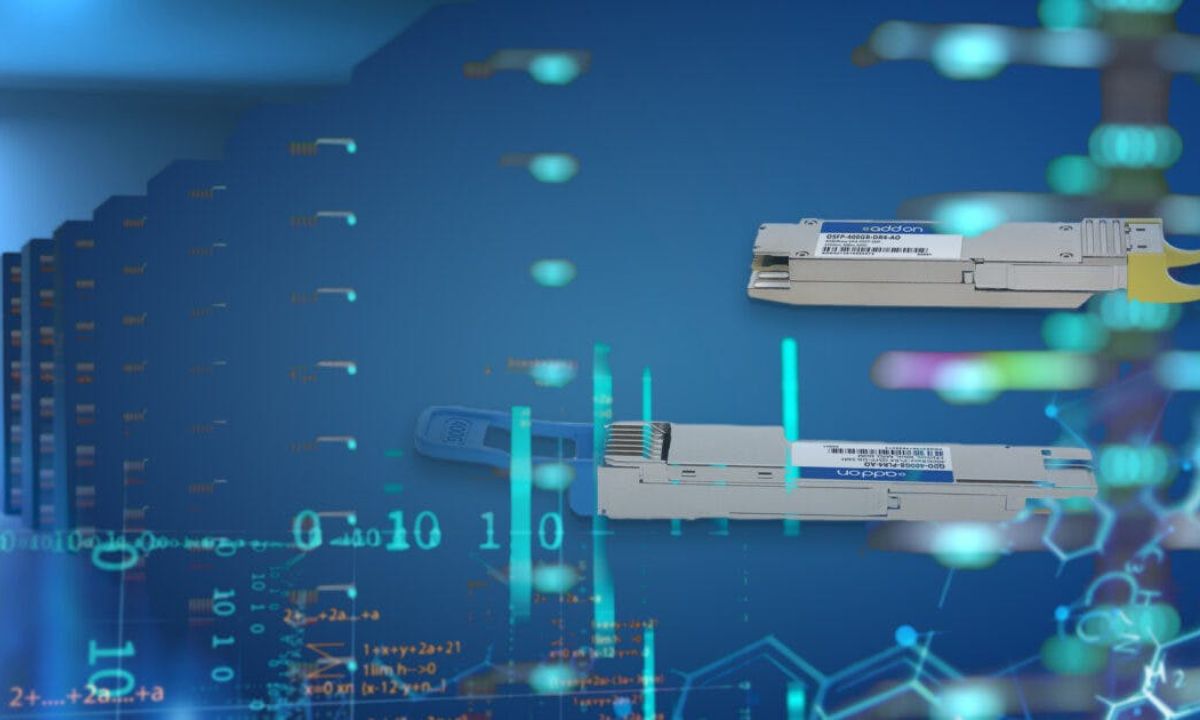What is 400G Ethernet?
How Does 400G Ethernet Differ from Previous Standards?
In terms of capacity and data transmission speed, 400G Ethernet signals a substantial change in network technology. For example, earlier versions of Ethernet, such as 100G Ethernet, had a transfer rate cap of 100 gigabits per second. The new 400G Ethernet can process data at an astonishing speed of 400 gigabits per second quadrupling its predecessors. This massive surge helps meet the ever-expanding bandwidth needs in cloud computing, AI, and video streaming. Moreover, 400G Ethernet has raised the reliability and efficiency of advanced multiplexing techniques, achieving higher data rates. This new model also allows for more scalability so that data centers can satisfy the needs of the future without overhauling their entire infrastructure.
For more in-depth information you should view from 400g ethernet – FiberMall
The Importance of the IEEE 802.3bs Standard
The creation or use of 400G Ethernet is largely reliant on the use of the ieee802.3bs standard. This standard was passed in December 2017 and specifies the technical parameters pertaining to the 200G and 400G Ethernet alongside ensuring their interoperability and coherence across devices and networks. With this standard, manufacturers can more easily construct compatible hardware like routers and optical modules because they are guaranteed to work with other systems. Alongside innovations such as Forward Error Correction (FEC) which helps make data transmission more reliable, the IEEE 802.3bs also encompasses numerous physical layers that allow for various deployment possibilities.
Important Features of 400G Ethernet Cables
We have 400G Ethernet cables that are designed for ultra-high-speed data transmission. This includes Direct Attach Copper (DAC) and Active Optical Cables (AOCs) as well as fiber optic cables which are all tailored for specific cases. DAC cables are more economical for short-distance interconnects, usually within racks. AOCs and optical fiber cables are more suited to longer distances, from several meters to kilometers. These cables use advanced technologies such as PAM4 (Pulse Amplitude Modulation with 4 levels) to move greater amounts of data over existing infrastructure. They also offer low latency and very dense configurations, making these cables ideal for contemporary data center environments.
How does 400G Ethernet work?
What modulation techniques are used in 400G Ethernet?
To meet the ever-increasing networking demand, 400G Ethernet uses advanced modulation techniques with complex data transfer. One of their primary modulation schemes is PAM4 which stands for amplitude modulation with 4 levels. Unlike the traditional method of NRZ modulation which switches bit levels at two distinct ranges per signal, PAM4 is far more efficient as it uses four distinct voltage levels to send two bits of information. This gives multitudes of data to be sent at low bandwidth, making it possible to reach the data rates of 400G.
In what ways does PAM4 technology improve data throughput?
PAM4 technology, by virtue of encoding two bits per symbol, effectively doubles the capacity of the signal with information sent per unit of time. This feature allows not only high data rates but also leverages the existing fiber infrastructure making the upgrade less expensive. Even with this advantage, PAM4 modulation presents new problems such as being highly sensitive to interference or requiring a higher signal-to-noise ratio(SNR) along with error correction algorithms to balance it out.
What does the term QSFP-DD mean, and what is its function in 400G networks?
The QSFP-DD (Quad Small Form-factor Pluggable Double Density) module is one of the main components enabling the functions of the Ethernet 400G built to address higher port density and scalability requirements in data centers. It expands the QSFP form factor by increasing the electrical lanes from four to eight, which accommodates data rates up to 400Gbps. Its use with lower-speed QSFP modules guarantees flexibility and integration with existing infrastructure. In addition, the compact size of the QSFP-DD helps to reduce space while supporting high-density deployments, making it a key component to the move toward the 400G Ethernet.
What are the benefits of 400G Ethernet?
How Does 400G Ethernet Solve Bandwidth Demands?
- The 400-gigabit ethernet caters to modern networks’ data transfer rate requirements due to rapid network expansion by facilitating expansion in the Ethernet bandwidth cap.
- Actual transport performance is ensured for video streaming, machine learning, and big data analytics through the reliable and efficient data transport of large volumes of data.
- It simplifies scaling by combining several connections of lower speeds into a single unit of 400G link.
Benefits of using 400G ethernet in Cloud computing
- Permits efficient handling of enormous workloads in hyperscale data centers by having flexible expandable capabilities.
- Fosters enhancement of seamless multi-tenant resource allocation and support through improved network throughput and seamless virtualization.
- Increases efficiency by reducing the hardware requirement to the power consumed per gigabit transferred to another location, improving energy efficiency.
In what ways does 400G ethernet aid in lowered latency?
- The innovative 400G architecture reduces the time needed to process data as well as buffering, ensuring reduced delays during data transfer.
- Its ability to deliver a packet faster to the desired location is very beneficial for latency-sensitive environments like financial transactions and real-time analytics.
- A wider area network with a 400G link enables a reduction in hops or jumps between devices improving responsiveness of the entire system while reducing latency.
How is 400G Ethernet impacting data centers?
What are the implications of 400G for large data centers?
With the use of 400G Ethernet, large data centers operate with increased efficiency. Bandwidth expansion is unparalleled which means that growing data traffic can be accommodated without huge hardware expansions. This enhancement allows for greater scalability while keeping physical footprints manageable. Moreover, the reduction in the need for multiple parallel connections simplifies 400G network topology which leads to lower operational complexity and improved reliability. There is also resource cost reduction through more efficient power usage and consolidated resources which translates to lower Total Cost of Ownership (TCO) for large-scale operations.
In what ways does 400G Ethernet facilitate machine learning applications?
To facilitate rapid training iterations and manage massive data sets, ultra speed, and low latency networks are required. The aforementioned characteristics are easily met by 400G Ethernet with faster data transmission alongside lower latency during inter-node communication. These capabilities ensure scalable, high-performance interconnects which are essential for machine learning workloads like deep learning. With 400G Ethernet’s enhanced reliability alongside reduced packet loss, accuracy during the training of the model is improved and downtime is minimized meaning organizations can achieve computational goals much faster.
What are the new features under Juniper 400G solutions?
Juniper Networks has developed new features under its 400G Ethernet solutions to meet the modern networking environments’ needs. The solution features flexible deployment models that allow merging with the existing infrastructure for various use cases. The hardware and software components provided by Juniper’s 40G solutions come with sophisticated telemetry and analytics, enabling the scrutiny of the network as well as allowing for the real-time detection and rectification of problems. Additionally, Juniper implements automated network management with artificial intelligence in the 400G solutions, which improves Administrative efficiency and reduces the wastage of resources. These features have enabled organizations to build high-performance networks to meet future expectations and changes.
What are common questions about 400G Ethernet?
What are the most frequently asked questions about 400G Ethernet?
What is 400G Ethernet?
Ethernet 400G is a new standard in communication technology that allows computers and networks to transfer data at speeds of 400 Gbps. This standard is designed to supply an ever-growing demand for data transfer in data centers, broadband cloud services, and internet providers.
What are the primary applications of 400G Ethernet?
Some of the more popular applications comprise interconnecting hyper scale data centers, high-performing computing (HPC) environments, serving infrastructure for AI and machine learning systems, and the backbone of service provider infrastructure.
What are the major technology issues in implementing 400G Ethernet?
For the reasons stated above, some of the more challenging issues are rudimentary signal integrity, cooling in tight spaces, power usage, and supporting older network systems. Companies also have to deal with the expense of system integration and, more importantly, the lack of experienced network engineers.
Is 400G Ethernet capable of backward compatibility?
Yes, in most cases 400G Ethernet can work with older environments as far as the 100G interface or even 200G interface, as long as the appropriate hardware and transceivers are available.
What is the expected evolution of Ethernet standards beyond 400G?
Ethernet standards will undergo changes along with the surge in data demands. 800G Ethernet followed by 1.6 Tbps (terabits per second) Ethernet are the two expected milestones and are expected to accommodate the increased bandwidth requirements as a result of 5G networks, IoT devices, and Artificial intelligence evolution. Ethernet technology will likely have an emphasis on energy efficiency while cost and environmental impact are minimized using advanced photonic and optical technologies. Collaborative work from industries, like the IEEE 802.3 Working Group will be critical in establishing the new specifications and advancing the adoption timeline.
What are the effects of 400G Ethernet on the future of networking?
Modern networking is changing with the innovations offered by 400G Ethernet, which is providing unparalleled speed, scalability, and efficiency. Its adoption allows enterprises to leverage ultra-high bandwidth applications creating possibilities for innovations in AI, machine learning, and other data-intensive endeavors. Also, 400G Ethernet enhances network capacity, decreases latency, and seamlessly facilitates connectivity in demanding regions such as content delivery networks (CDNs) and virtualized infrastructures. Furthermore, the integration of AI automation and network orchestration simplifies monitoring and management, improving operational efficiencies and agile responses to emerging challenges. As a major component of the digital era, 400G Ethernet is a building block for the networks of the future.
ALSO READ: Harnessing 5G Business Internet: The Fast Track to Enhanced Corporate Connectivity











